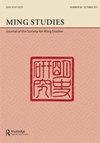Preface
IF 0.3
0 ASIAN STUDIES
引用次数: 0
Abstract
Almost a century has gone by since the discovery of general relativity and quantum mechanics, yet the goal of finding a consistent theory of quantum gravity nonetheless remains elusive. After the two major triumphs of modern quantum field theory, quantum electrodynamics and the quantization of non-abelian gauge theories (including quantum chromodynamics and the electro-weak theory) the early seventies provided high hopes that a quantum treatment of general relativity might be around the corner. However, to the dismay of many, the results of t’ Hooft and Veltman conclusively established that quantum gravity is not perturbatively renormalizable, thus confirming earlier suspicions based on purely dimensional arguments. Disturbingly, the divergences which appear in gravity at one loop order in the semiclassical expansion, involving curvature squared terms, cannot be re-absorbed into a redefinition of the coupling constants, thereby making it difficult to derive unambiguous statements about the properties of the underlying quantum theory. More importantly, the now exhaustively explored examples of quantum electrodynamics and non-abelian gauge theories have established that until these ultraviolet renormalization effects are consistently and systematically brought under control, it will be very difficult to make any sort of physically relevant predictions. To this day, the ultraviolet problems of quantum gravity border on the speculative for many: after all, if quantum gravity effects are relevant at distances of the order of the Planck length (10−33cm), then these might very well have little relevance for laboratory particle physics in the foreseeable future. But how could one so conclude without actually doing the relevant calculations? What if new, non-perturbative scales arise in the renormalization procedure, as occurs in non-abelian gauge theories? Since the seventies, strategies that deal with the problem of ultraviolet divergences in quantum gravity have themselves diverged. Some have advocated the search for a new theory of quantum gravity, a theory which does not suffer from ultraviolet infinity problems. In supersymmetric theories, such as supergravity and ten-dimensional superstrings, new and yet unobserved particles are introduced thus reducing the divergence properties of Feynman amplitudes. In other, very restricted classes of supergravity theories in four dimensions, proponents have claimed that前言
广义相对论和量子力学的发现已经过去了近一个世纪,但找到一个一致的量子引力理论的目标仍然难以捉摸。在现代量子场论、量子电动力学和非阿贝尔规范理论(包括量子色动力学和电弱理论)的量子化两大胜利之后,70年代初,人们对广义相对论的量子处理可能即将到来寄予厚望。然而,令许多人沮丧的是,t’Hooft和Veltman的结果最终证明了量子引力不可扰动重整化,从而证实了早期基于纯粹维度论证的怀疑。令人不安的是,在涉及曲率平方项的半经典展开中,重力中以一个环级出现的分歧无法重新吸收到耦合常数的重新定义中,从而难以得出关于基础量子理论性质的明确陈述。更重要的是,现在详尽探索的量子电动力学和非阿贝尔规范理论的例子已经证明,在这些紫外线重整化效应得到一致和系统的控制之前,很难做出任何形式的物理相关预测。时至今日,量子引力的紫外线问题对许多人来说都是推测性的:毕竟,如果量子引力效应在普朗克长度(10−33厘米)量级的距离上是相关的,那么在可预见的未来,这些效应很可能与实验室粒子物理无关。但是,如果不进行相关计算,怎么会得出这样的结论呢?如果在重整化过程中出现新的非微扰尺度,就像在非阿贝尔规范理论中发生的那样,会怎么样?自70年代以来,处理量子引力中紫外线发散问题的策略本身就存在分歧。一些人主张寻找一种新的量子引力理论,这种理论不受紫外线无限大问题的影响。在超对称理论中,如超重力和十维超弦,引入了新的但未被观测到的粒子,从而降低了费曼振幅的发散特性。在其他非常有限的四维超重力理论中,支持者声称
本文章由计算机程序翻译,如有差异,请以英文原文为准。
求助全文
约1分钟内获得全文
求助全文

 求助内容:
求助内容: 应助结果提醒方式:
应助结果提醒方式:


